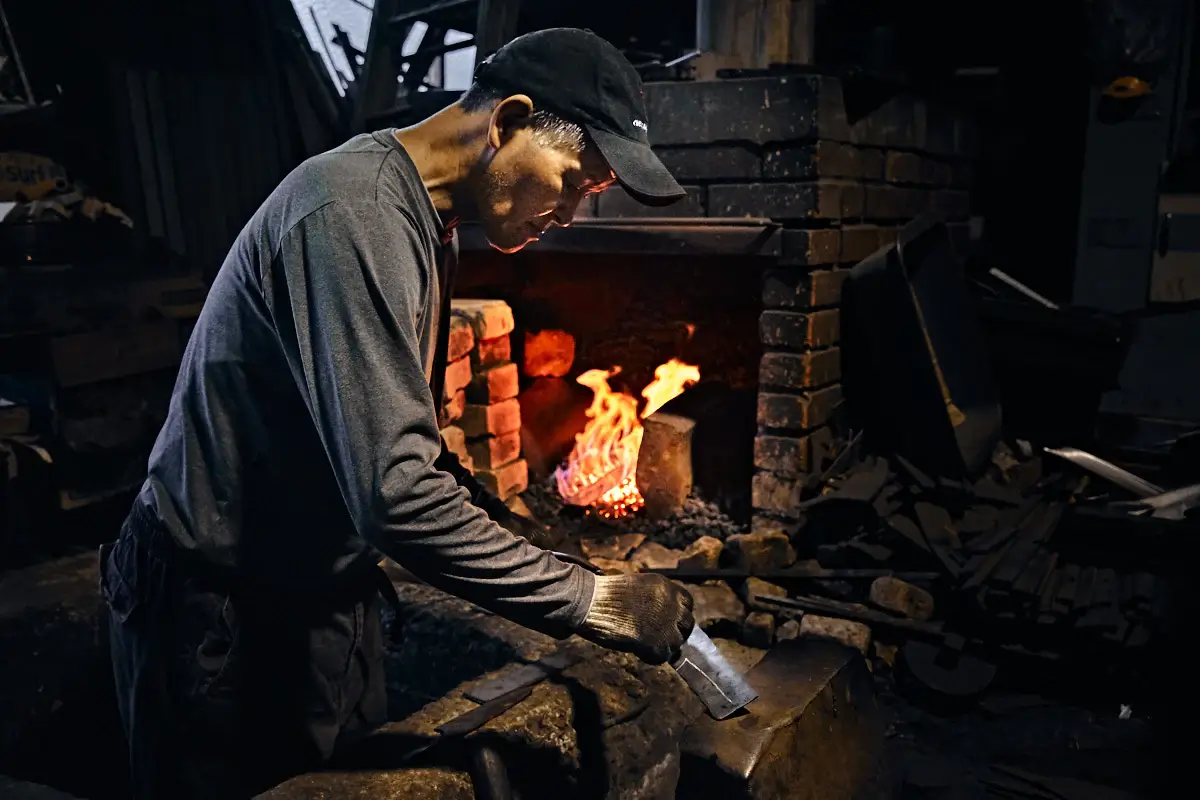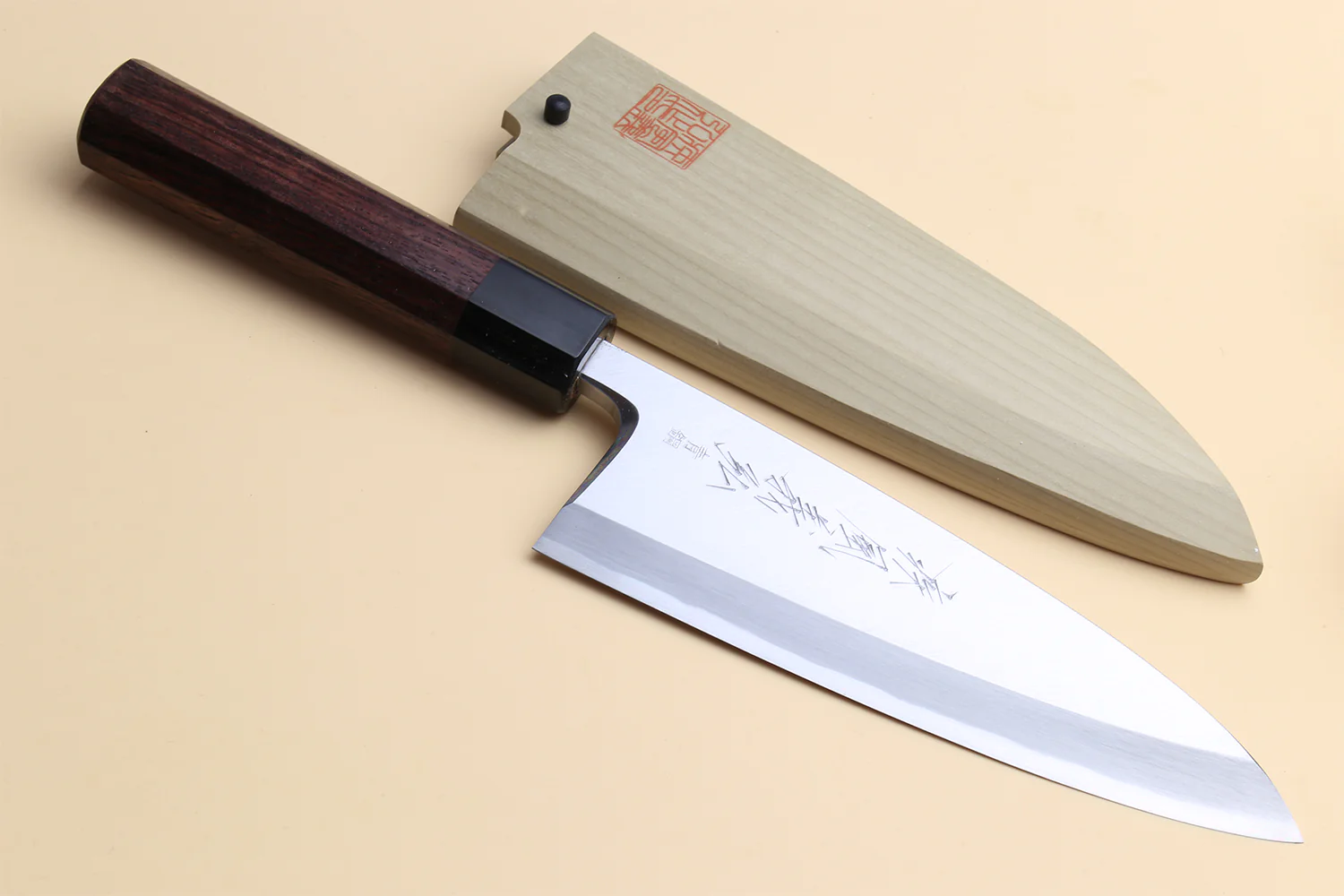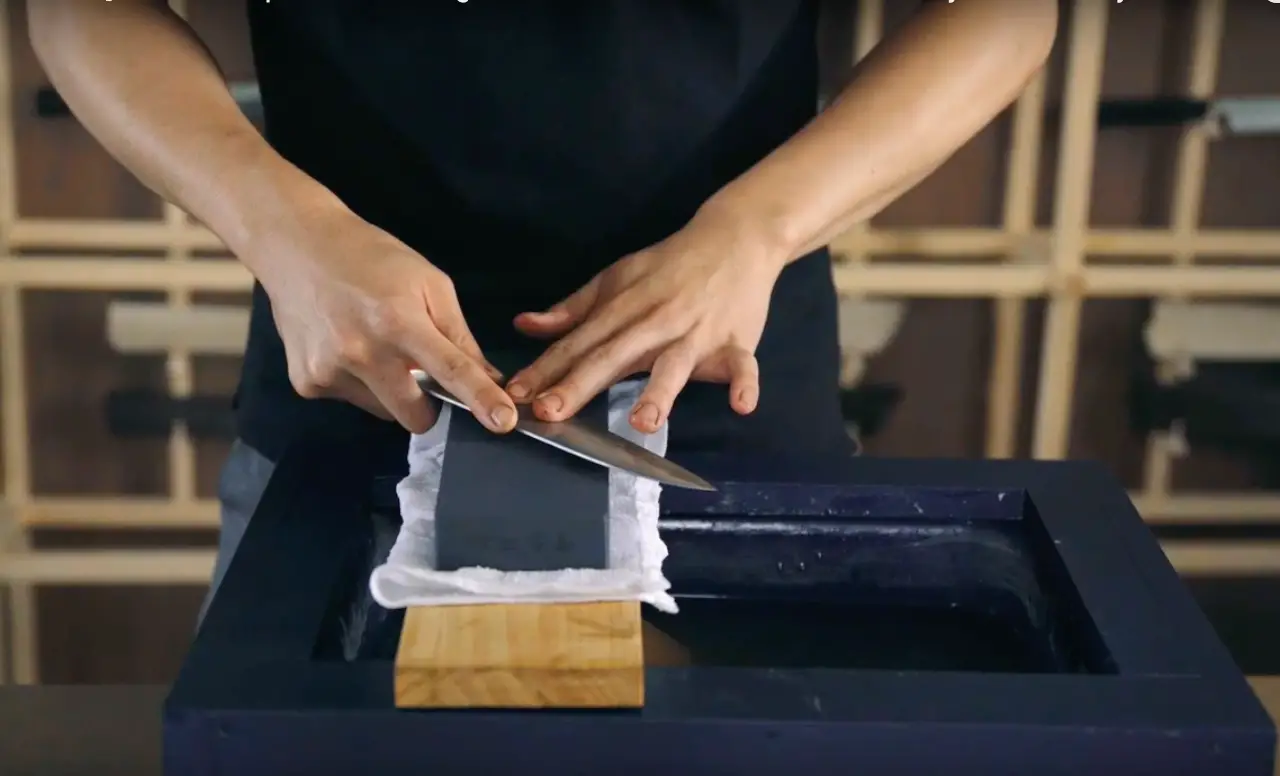
No time to sharpen your knives with a whetstone? Check out this affordable alternative, Kitchen Knife Sharpener from Amazon and enjoy sharp Knives with ease.
We will receive a small commission from every sale and you get the best deal.
Dull knife? Here’s a detailed step-by-step guide for sharpening Japanese knives.
This guide is for sharpening typical Western-style knives (i.e. double bevel blades) like gyuto or santoku.
You’ll learn:
- What equipment you need
- How to prepare your whetstone
- How to hold the knife
- How to find correct sharpening angle
- and more…
Let’s get started!
1. Required Equipment
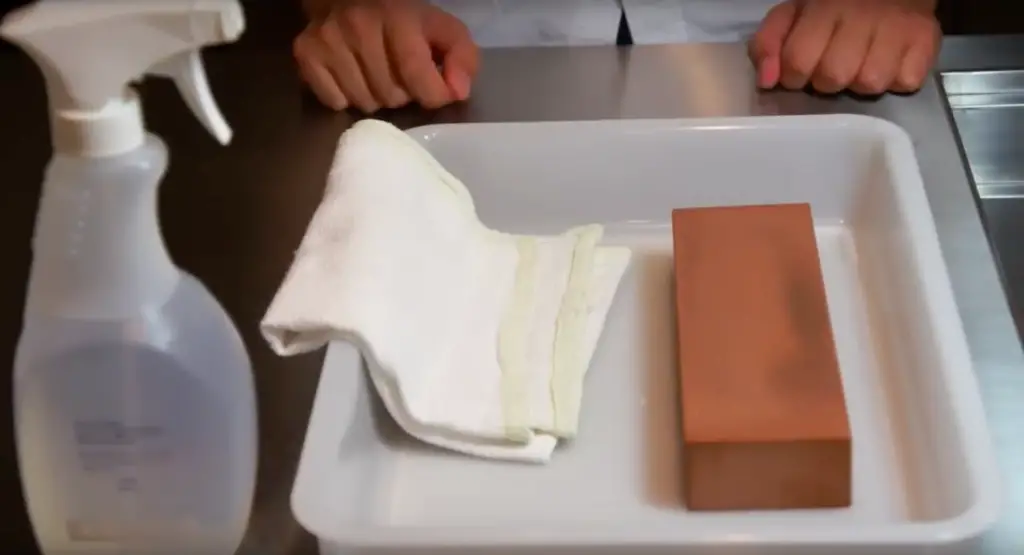
Here’s what you need:
- a knife – Gyuto, santoku or other Western style blade.
- a whetstone – Japanese sharpening stone. See below for more details on whetstone grit selection.
- a small kitchen towel – To prevent whetstone from slipping, and keeping the area clean
- a bucket/container of water – To soak your whetstone. Water is also used throughout sharpening.
- newspapers – For removing burrs, and testing sharpness
- a bit of patience
Which whetstone grit should you use?
Whetstones come in various grit sizes:
- Low/coarse grit stones (120-400 grit) are for rough sharpening, removing chips, and fixing damaged or extremely dull blades.
- Medium grit stones (700-2000 grit) are for regular sharpening and maintenance.
- High grit stones (3000+ grit) are for removing fine scratches, and finishing/polishing the blade.
If you’re not sure, just use a medium grit stone to start.
For more about whetstone selection, and product recommendations, check out this article.
2. Prepare your whetstone
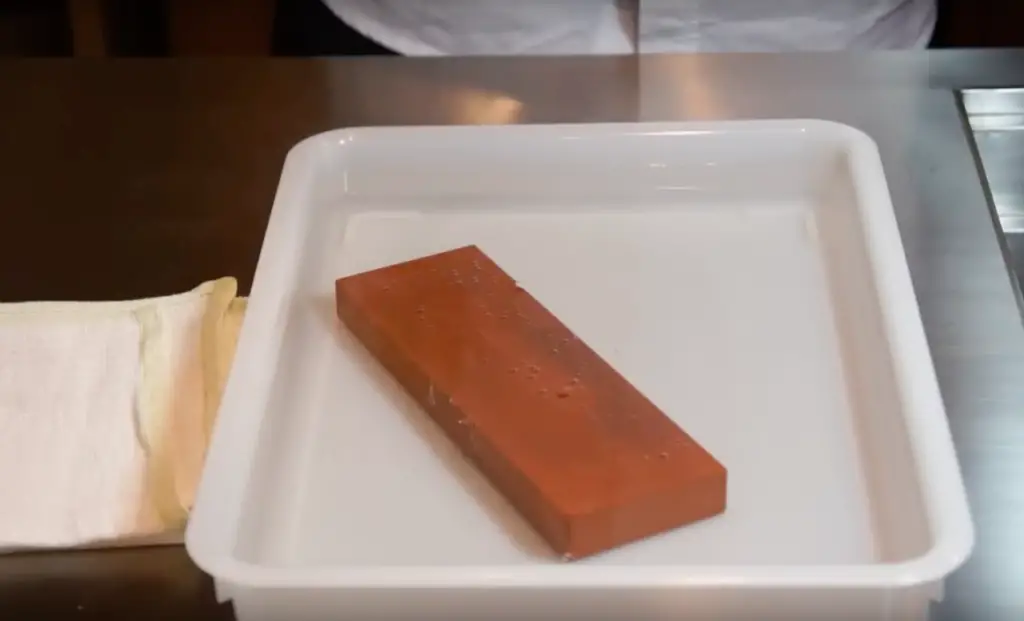
Soak the whetstone in water according to the supplier’s instructions. Usually it takes around 10-20 minutes. When no more bubbles appear in the water, the stone is ready for use.
Some stones do not need to be soaked in water, while others just need a spray of water (i.e. “splash and go” stones). Please read your stone’s instructions first.
3. Prepare workspace
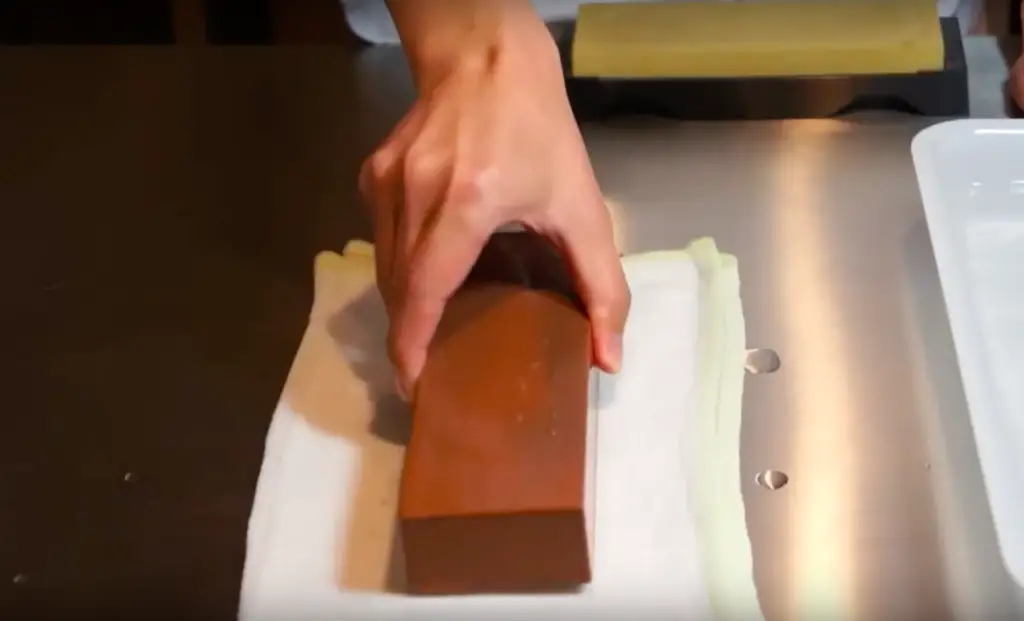
Dampen your kitchen towel, and lay it flat on your counter. When the stone is ready, place it on top of the damp towel. This is to prevent the stone from slipping.
Some stones also come with special non-slip base/stand to use when sharpening.
The whetstone should be placed so that the short side is facing your body. Also make sure that the top surface of your stone is completely flat. Some stones can become cratered/indented after extended use. You may need to use a whetstone flattener / fixer to make it level again.
4. How to hold knife for sharpening
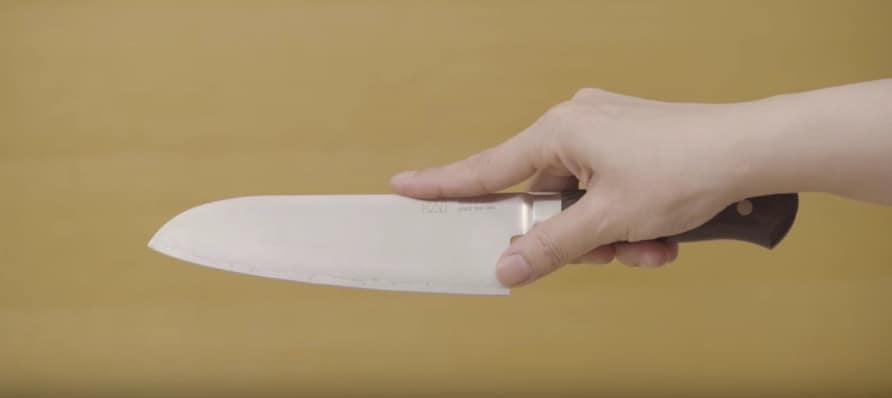
Hold your knife with your right hand, wrapping your bottom three fingers round the handle, then place your thumb on the flat surface of the knife, and your index finger on the spine. You can also wrap all four fingers around the handle if you prefer.
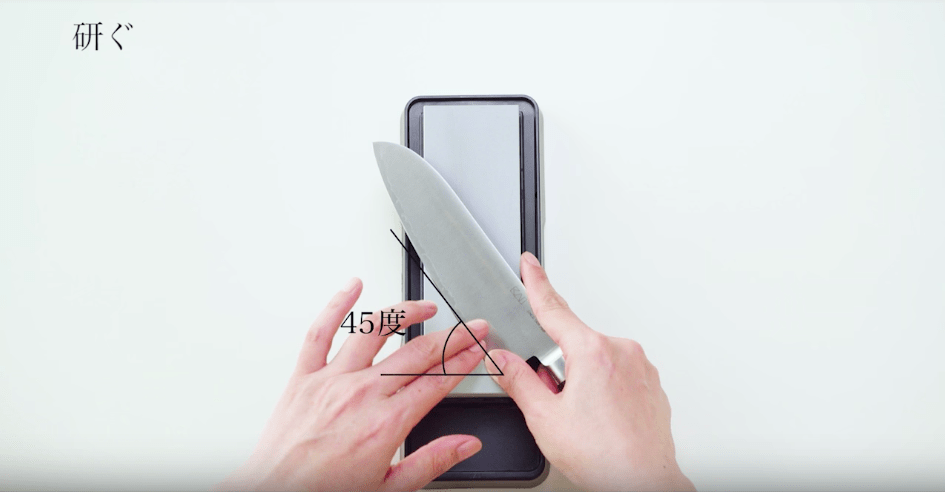
The knife should be held at approximately at 45 degree angle to the sharpening stone with the cutting edge facing your body. Your left hand will be used to press the cutting edge against the stone.
5. Finding the correct sharpening angle.
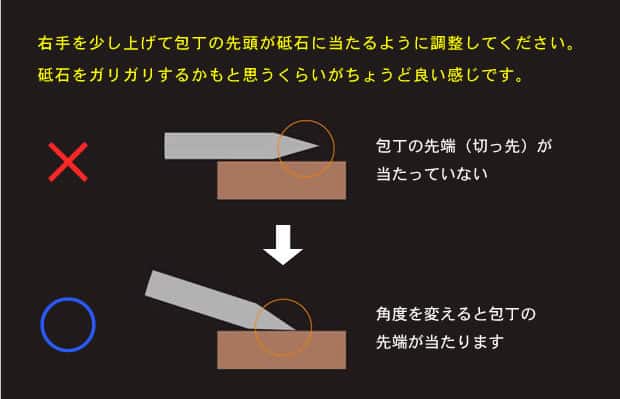
Finding and maintaining the correct sharpening angle is probably the toughest part for beginners.
Here’s a couple ways:
- First place the blade flat on the stone. Then, lift the spine slowly until you feel the bevel is laying flat against the stone.
- Hold that angle, and try to slide the blade across the whetstone. If it slides too easily, then the angle is not high enough. If it feels like it is catching too much, then the angle is too high. You will need to experiment a bit to find the right angle.
- Another way is to place a couple of pennies, or other small flat object (like a chopstick) under the knife to help yourself remember the correct angle. Two pennies is approximately 15 degrees.
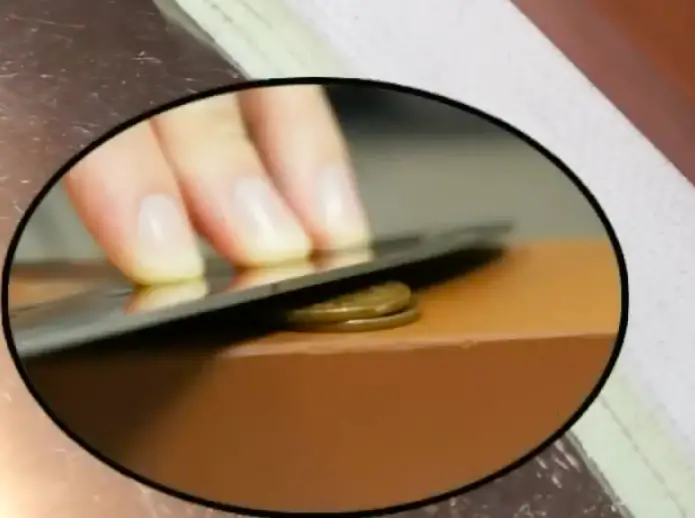
Different knives have different blade bevel angles, so you will need to experiment a bit to find the correct angle for your knife. Some knives may also have different angles on the right and left sides of the blade. In any case, the most important thing is to keep the blade at the same angle as you sharpen.
6. Sharpen the right side of the blade

Once you have found the correct angle, it’s time to start sharpening!
Starting from the tip of the blade, use two or three fingers from your left hand to press the cutting edge into the stone.
Apply slight pressure with your left hand as you push forward, and release pressure slightly as you pull back. Use the entire length of the whetstone.
Remember, the most important thing is to maintain the same sharpening angle as you move the knife back and forth.
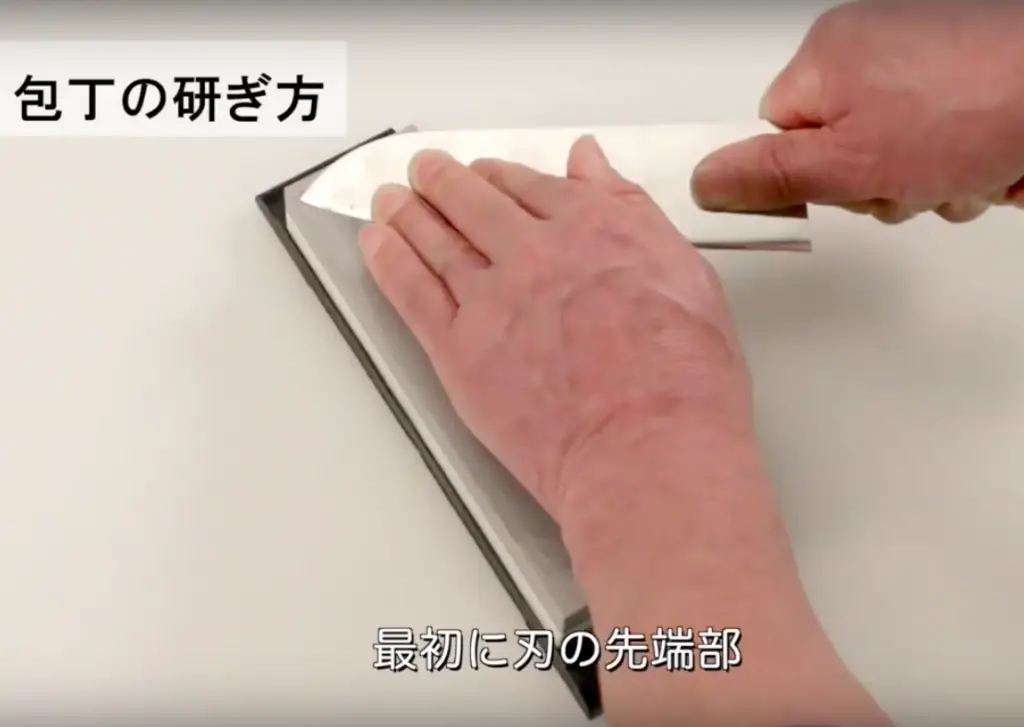
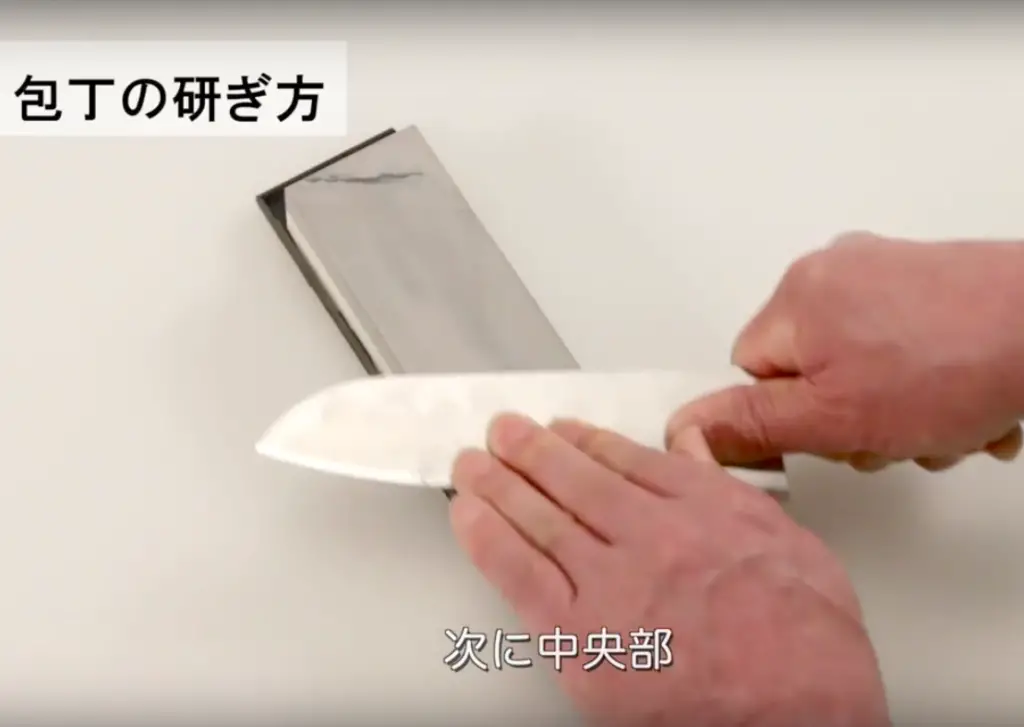
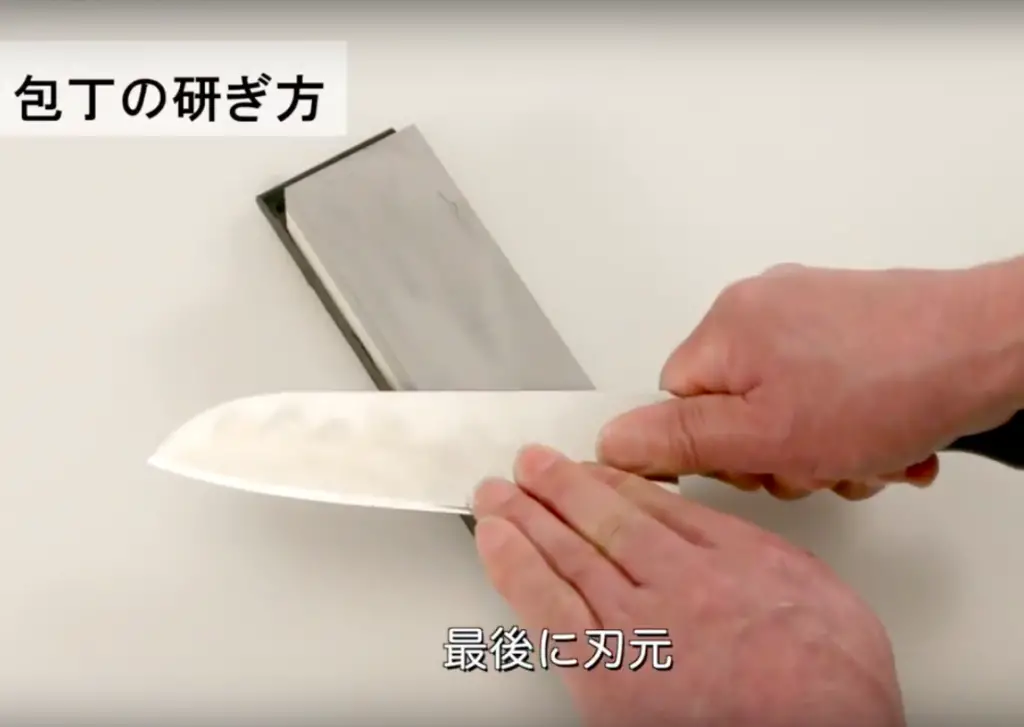
Focus on sharpening one section of the knife at a time. Start from the tip of the blade. When the tip is sharp, move on to the middle section. Then, sharpen the section closes to the handle.
Sharpen each section until you feel a burr develop along the edge. It may take awhile depending on how hard your blade steel is. Repeat until the entire edge of the knife is sharpened from tip to heel.

As you sharpen, the water on the stone will start to turn murky / black. Don’t try to remove the black water, as it actually helps to sharpen the blade smoothly. If the stone starts to become dry, simply add water onto it.
7. Sharpen the left side of the blade
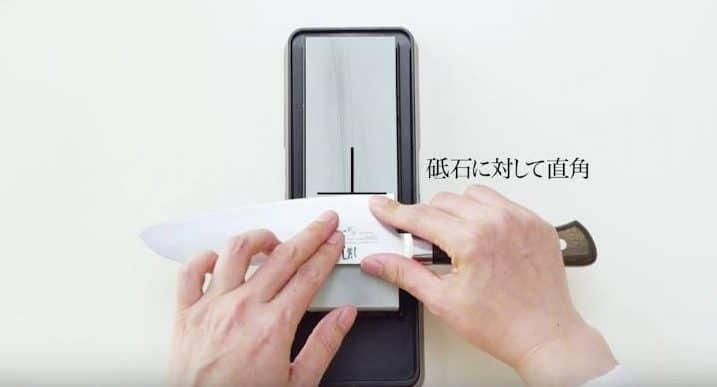
Flip the blade over so that the cutting edge is facing away from you, and repeat the sharpening process.
If your knife’s blade bevel is non-symmetrical, you may need to find the correct sharpening angle again (Step 5).
Your right hand position will be a bit different when holding the knife. The index finger will be on the face of the knife, and thumb on the spine (see above image).
To sharpen the heel of the blade, you will need to rotate the knife perpendicular to the stone like in the above image. This way, the handle does not get in the way.
Sharpening the left side will also remove the burr created from sharpening the right side. The next step is to further remove the remaining burrs.
8. Remove burrs, test sharpness

A simple way to remove burrs is to slide the knife gently back and forth across a stack of newspaper to ensure it is smooth. You can also remove burrs by VERY lightly sliding the entire edge of the knife across the whetstone.
Removal of burrs is necessary so you can make clean cuts through your ingredients.
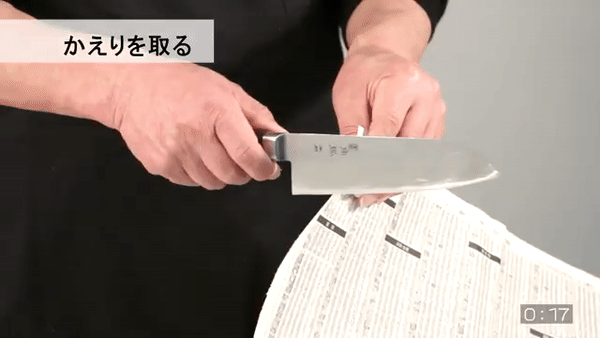
Test the sharpness of your knife by holding the newspaper in the air and slicing it. If sharpened well, the knife should slice through the paper effortlessly.
9. Repeat process with higher grit whetstone (optional).
If you want, you can repeat the entire process with a higher grit whetstone to further polish the blade. This will give your knife a nice shine, and remove any fine lines.
10. Clean knife and whetstone
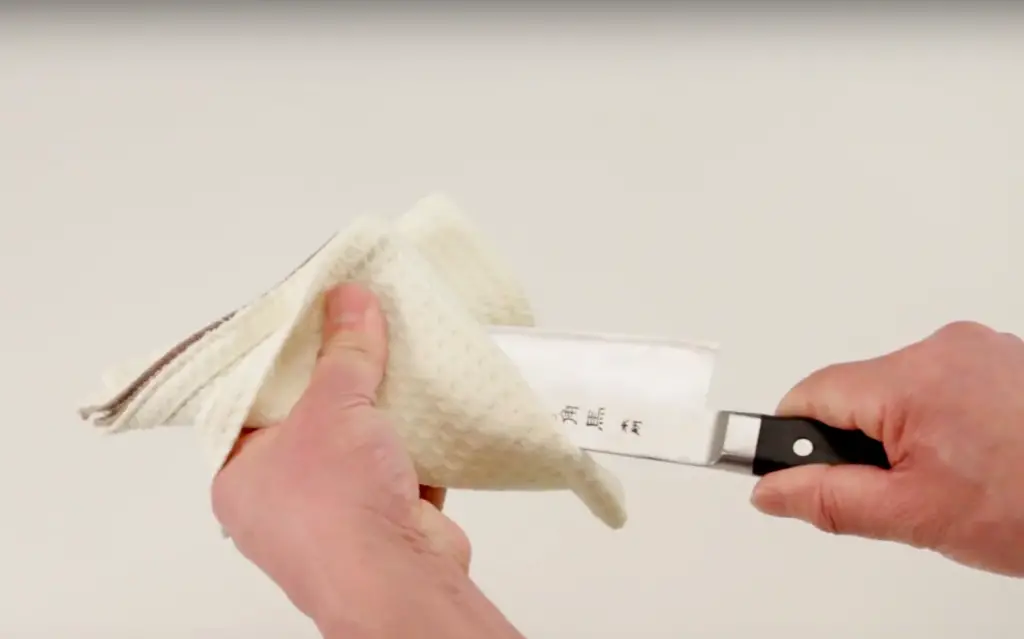
Hand wash and dry your newly sharpened blade. Be careful not to cut yourself!
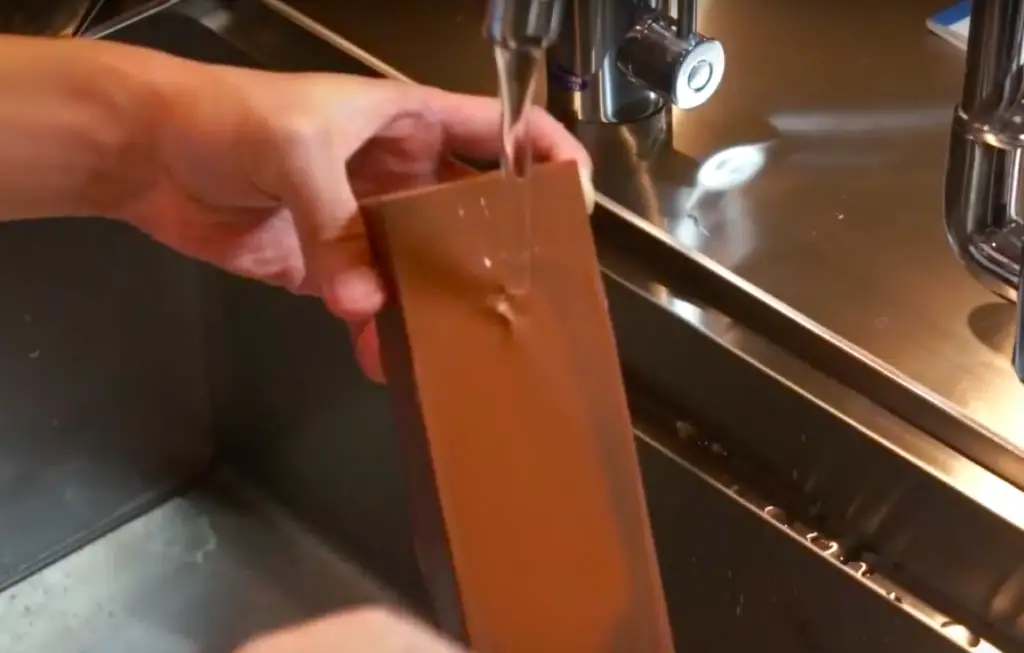
Rinse, wipe off the whetstone, then let it air dry somewhere away from sunlight. You are FINISHED!
Summary
Congratulations! You now know how to sharpen a Japanese kitchen knife.
Sharpening your own knife is an intimidating task at first, but is an incredibly useful skill to have. Using a sharp knife to effortlessly slice through ingredients is also one of the most satisfying feelings.
Like most things, learning to sharpen knives takes time and practice. Every time you sharpen your knife, you are actually removing steel from your knife. At first, you will probably be removing more steel than necessary, but as you get more experienced you will be able to remove the minimum amount of material to create a sharp edge.
Do you have any knife sharpening tips to share? Let me know in the comments below!
What to read next:
Learn other Japanese knife care tips (cleaning, storage, etc.)
Need a whetstone? Read this guide to find the best whetstone for your needs.
Looking for knife? Check out the Japanese knives buying guide
Sources
- https://www.kai-group.com/products/special/hocho/maintenance/polish/double_bevel
- https://www.youtube.com/watch?v=HqbszZJCfgo
- https://www.youtube.com/watch?v=rwqhErGAJxU&t=224s
- https://www.youtube.com/watch?v=T7P-_u7NoxM
- https://www.youtube.com/watch?v=2R7MuESZMKA
Subscribe for free today! Receive cool recipes, my latest Japanese knife picks and learn about Japanese culture. Delivered every other week to your inbox.
